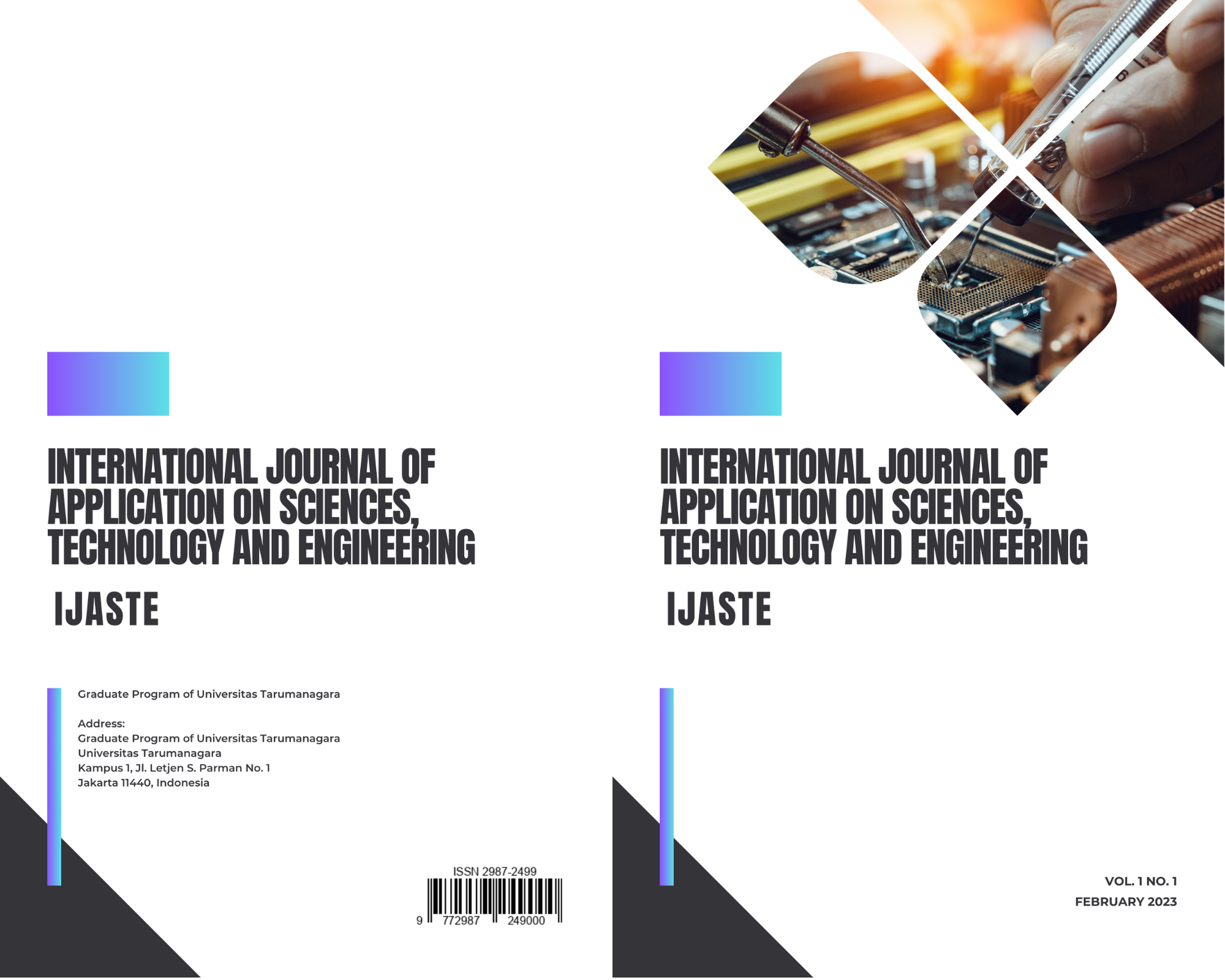Environmentally-friendly Cars and How to Spread the Populations
Main Article Content
Abstract
The background of this research is that the level of pollution in the world is increasing every year, and one of the causes is vehicles such as cars. To reduce this, several companies innovate by making environmentally friendly cars. This research will focus on the advantages and disadvantages of hydrogen and electric cars. This research is aimed at the usage of cars in Japan and Indonesia. The purpose of this study are: 1) to study the population and the current development progress of environmentally friendly fuels such as hydrogen and electricity in cars, 2) to provide suggestions for Japanese and Indonesian to market environmentally friendly cars. The method we use for collecting the data is a literature study method sourced from company websites, news, and journals. The results of this study indicate that in the use of environmentally friendly cars, such as hydrogen cars and electric cars, there are various advantages and disadvantages. However, compared to the advantages, there are still more disadvantages in its use. In order to help to overcome these shortcomings, this study will provide some suggestions on how to popularize these environmentally friendly cars.
Article Details

This work is licensed under a Creative Commons Attribution-NonCommercial-ShareAlike 4.0 International License.
References
Indonesia: Number of Cars 2020, (Statista, 2021), Retrieved 31 January 2022 at 10:30 a.m, from https://www.statista.com/statistics/978871/indonesia-number-of-cars-use/
Z. Qiao., X. Meng, and L. Wu, “Forecasting Carbon Dioxide Emissions in APEC member Countries by a New Cumulative Grey Model.” (Ecological Indicators, 2021), pp.125. https://doi.org/10.1016/j.ecolind.2021.107593 (accessed during December 18th, 2021 at 15:07 p.m)
S. Sharma, S. Agarwal, and A. Jain, “Significance of Hydrogen as Economic and Environmentally Friendly Fuel.” (MDPI, 2021) https://doi.org/10.3390/en14217389 (accessed during January 27th, 2022 at 10:14 a.m)
“A Brief History of Environmentally-friendly Cars.” (hyundai.news, 2016) . Retrieved 29 January 2022 at 16:04 p.m, from https://www.hyundai.news/eu/articles/stories/a-brief-history-of-environmentally-friendly-cars.html
N. F. Astuti, “Mengenal Pengertian Ramah Lingkungan, Berikut Contoh Penerapannya.” (merdeka.com, 2021). Retrieved 27 January 2022 at 10:33 a.m, from https://www.merdeka.com/jabar/mengenal-pengertian-ramah-lingkungan-berikut-contoh-penerapannya-kln.html
Sustainable Energy: 5 Eco-Friendly Types of Fuel — Smart Alternative Fuels. (Smart Alternative Fuels, 2020). Retrieved 28 January 2022 at 11:02 a.m, from https://smartalternativefuels.com/blog/sustainable-energy-5-eco-friendly-types-of-fuel
R. Matulka, “The History of the Electric Car” (Energy.gov, 2014). Retrieved 5 February 2022 at 14:20 p.m, from https://www.energy.gov/articles/history-electric-car
Alternative Fuels Data Center: How Do Fuel Cell Electric Vehicles Work Using Hydrogen?. (Afdc.energy.gov, No Date). Retrieved 27 January 2022 at 09:48 a.m, from https://afdc.energy.gov/vehicles/how-do-fuel-cell-electric-cars-work
H. A. Turat, B. Tanç, and N. Özaslan, “Sustainability Analyses for Hydrogen Fuel Cell Electric Vehicles.” (Sustainable Mobility, IntechOpen, 2020). https://doi.org/10.5772/intechopen.90675 (accessed during January 27th, 2022 at 11:22 a.m)
A. France-Presse, “Japan's Lofty 'Hydrogen Society' Vision Hampered by Cost.” (NDTV.com, 2015). Retrieved 27 January 2022 at 11:44 a.m, from https://www.ndtv.com/world-news/japans-lofty-hydrogen-society-vision-hampered-by-cost-1239450
A. Nugrahadi, “Begini Cara Kerja Mobil Listrik.” (KOMPAS.com, 2021). Retrieved 27 January 2022 at 10:20 a.m, from https://otomotif.kompas.com/read/2021/04/27/161200815/begini-cara-kerja-mobil-listrik?page=all
A. Prima, “Tak Hanya Hemat Operasional, Ini 5 Keuntungan Punya Mobil Listrik.” (medcom.id, 2021). Retrieved 27 January 2022 at 10:25 a.m, from https://www.medcom.id/otomotif/mobil/0k84qwPk-tak-hanya-hemat-operasional-ini-5-keuntungan-punya-mobil-listrik
K. Szulecki and D.H. Claes, “Towards decarbonization: Understanding EU energy governance.” (Cogitatio Press, 2019). https://doi.org/10.17645/pag.v7i1.2029 (accessed during January 29th, 2022 at 14:02 p.m)
Y. Kigawa. (2020). “トヨタ新型「MIRAI」に込めた販売10倍増の成算 | 経営. 東洋経済オンライン” (Toyotakeizai net, 2020). Retrieved 19 January 2022 at 20:38 p.m, from https://toyokeizai.net/articles/-/397044
S. Wang, A. Lu, and C. J. Zhong, “Hydrogen Production from Water Electrolysis: Role of Catalysts.” (Nano Convergence, Korea Nano Technology Research Society, 2021) https://doi.org/10.1186/s40580-021-00254-x (accessed during January 27th, 2021 at 09:35 a.m)
水素ステーション普及状況_水素ステーションの補助金交付を行う次世代自動車振興センター. (Cev-pc.or.jp, No Date). Retrieved 19 January 2022 at 19:31 p.m, from http://www.cev-pc.or.jp/suiso_station
Y. Herawati, “Kenapa Sih Orang Jepang Suka Mobil Kecil?.” (Viva.co.id, 2019). Retrieved 27 January 2022 at 10:12 a.m, from https://www.viva.co.id/otomotif/mobil/1185750-kenapa-sih-orang-jepang-suka-mobil-kecil?page=2&utm_medium=page-2
M. Aziz, Y. Marcellino, I. A. Rizki, S. A. Ikhwanuddin, and J. W. Simatupang, “Studi Analisis Perkembangan Teknologi dan Dukungan Pemerintah Indonesia Terkait Mobil Listrik.” (TESLA: Jurnal Teknik Elektro, 2020) 22(1), 45. https://doi.org/10.24912/tesla.v22i1.7898 (accessed during January 29th, 2022 at 15:04 p.m)
A. Surya Ramadan and Purwono, “Challenges and Opportunities of Microbial Fuel Cells (MFCs) Technology Development in Indonesia.” (MATEC Web of Conferences, EDP Sciences, 2017) (Vol. 101). https://doi.org/10.1051/matecconf/201710102018 (accessed during January 29th, 2022 at 16:21 p.m)
“Daftar Mobil Listrik di Indonesia, Dari Termurah Hingga Termahal.” (Otosia.com, 2021) Retrieved 28 January 2022 at 18:06 p.m, from https://www.otosia.com/berita/daftar-mobil-listrik-di-indonesia-dari-termurah-hingga-termahal.html.
F. Sidik, “Minat Pasar Indonesia Terhadap Mobil Listrik Tertinggi di Asean | Otomotif - Bisnis.com.” (Bisnis.com, 2018). Retrieved 28 January 2022 at 13:04 p.m, from https://otomotif.bisnis.com/read/20180206/275/735258/minat-pasar-indonesia-terhadap-mobil-listrik-tertinggi-di-asean
A. Umah, “Mobil Listrik Diramal Baru Booming di RI 20-30 Tahun Lagi.” (CNBC Indonesia, 2021). Retrieved 19 January 2022 at 21:04 p.m, from https://www.cnbcindonesia.com/news/20211014123443-4-283870/mobil-listrik-diramal-baru-booming-di-ri-20-30-tahun-lagi
Gaikindo, “Ini Saran Gikindo Untuk Mobil Listrik” (Republika.co.id, 2016). Retrieved 20 January 2022 at 21:06 p.m, from https://republika.co.id/berita/ekonomi/korporasi/18/10/18/pgsepm370-ini-saran-gaikindo-untuk-mobil-listrik



